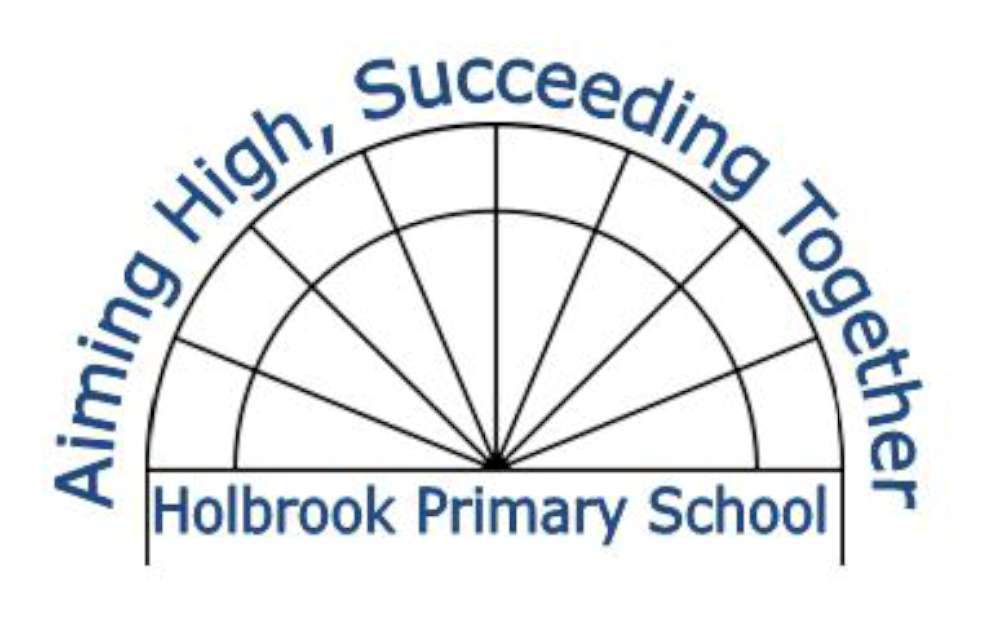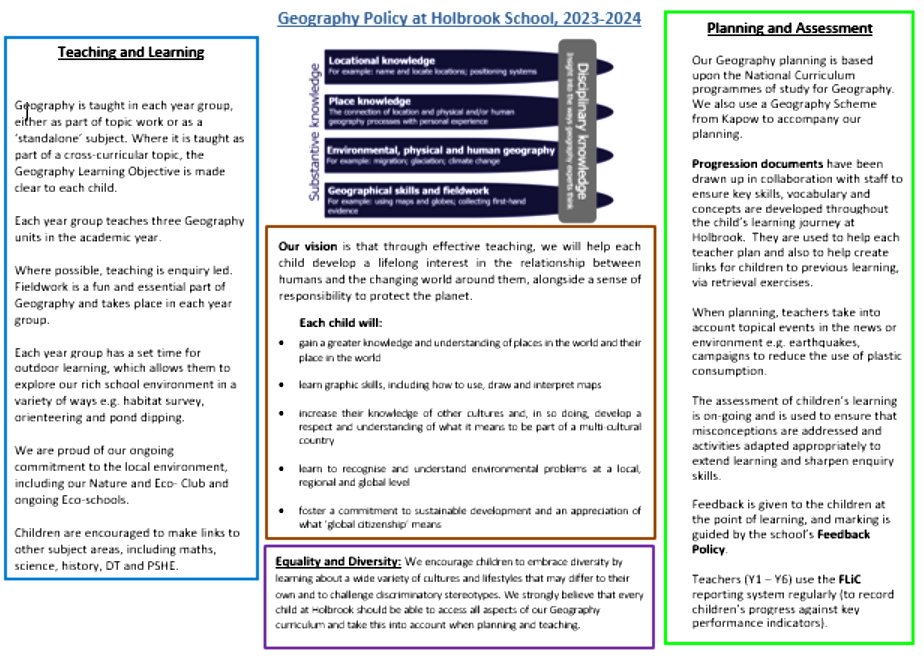Geography
Geography at Holbrook
Intent
At Holbrook Primary school, the ultimate aim of our geography curriculum is to help develop a sense of awe and wonder in each child about the physical world, as well as a desire to take responsibility to look after it.
At the start of their learning journey, each child explores the local area, helping to develop their sense of being part of a community. As they progress through school learning about places further afield, they are encouraged to critically examine similarities and differences to their own environment and to develop a respect and understanding of other places and cultures.
In a world dominated by the global issues of pollution and global warming, it is easy for children to feel overwhelmed and helpless; our role at Holbrook is to encourage the children to see that they can make a positive difference to their changing world, particularly at a local level.
Through effective teaching and an exciting up-to-date curriculum, each child should leave our school with the necessary skills to navigate the world around them, whether it be map skills, or locational knowledge.
Implementation
Our Geography planning is based upon the National Curriculum programme of study for Geography. Progression documents have been drawn up in collaboration with staff to ensure key skills, vocabulary and concepts are developed throughout the child’s learning journey at Holbrook. They are used to aid planning and also to help create links for children to previous learning, via retrieval exercises. When planning, teachers take into account topical events in the news or environment e.g. earthquakes, campaigns to reduce the use of plastic consumption. The school is a member of the Geographical Association and Digimaps, which both offer up to date planning and teaching resources.
Geography is taught in each year group, either as part of topic work or as a ‘standalone’ subject. Where it is taught as part of a cross-curricular topic, the Geography learning objective is made clear to each child. Where possible, teaching is enquiry led.
In each year group, fieldwork is a fun and key aspect of the geography curriculum in order to allow children to encounter geographical concepts first-hand and connect their classroom learning with the real world. We are proud of our conservation area and each year group has regular opportunities to explore our rich school environment in a variety of ways e.g. habitat survey, orienteering and pond dipping. Children also have the opportunity to participate in fieldwork at Wakehurst Place and during a Horsham town trail, as well as a residential to Sayers Croft.
Throughout the year, children take part in whole school initiatives organised by the Eco-Council including National Big Birdwatch, litter picks and NO Single Use Plastics week. After school clubs including Gardening and Nature Club also help develop children’s interests in their environment.
Impact
When starting a new learning theme, teachers often ask children to write down what they already know (or would like to find out). This can be a valuable way to help a teacher plan and also as a benchmark for the child to measure their subsequent learning. Children are encouraged to assess their understanding of a lesson; this can be by reviewing the key learning objective for the lesson or by checking ‘I can’ statements.
Teacher assessment of children’s learning is ongoing, with verbal feedback provided during or at the start of each session. This helps ensure that misconceptions are quickly addressed and that activities are adapted appropriately to consolidate or extend learning.
Teachers use a formal school report system (FLIC) to record children’s progress against key performance indicators from the school progression plan, which is a useful tool to help obtain an overall picture of each child’s geography learning throughout the year.
The subject lead regularly reviews the impact of teaching and learning in Geography through looking at books and talking to children about their geographical knowledge and understanding of key concepts.
As a result, children leave Holbrook with strong knowledge of significant places, physical and human geographical features, as well as the geographical skills required to apply it.

